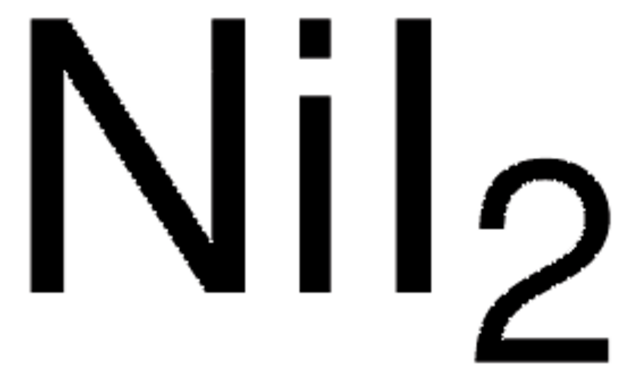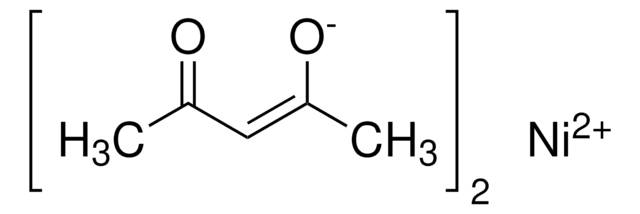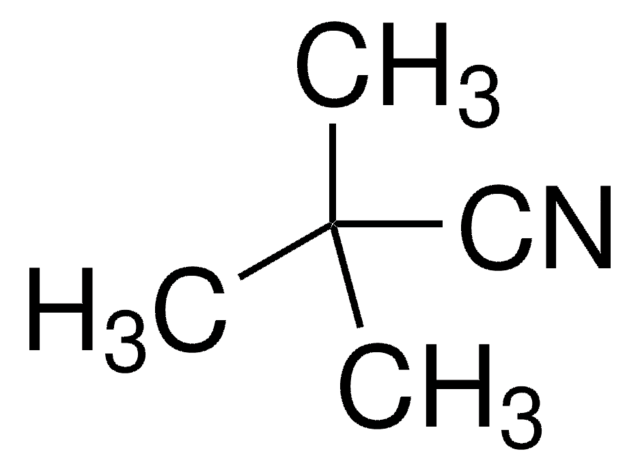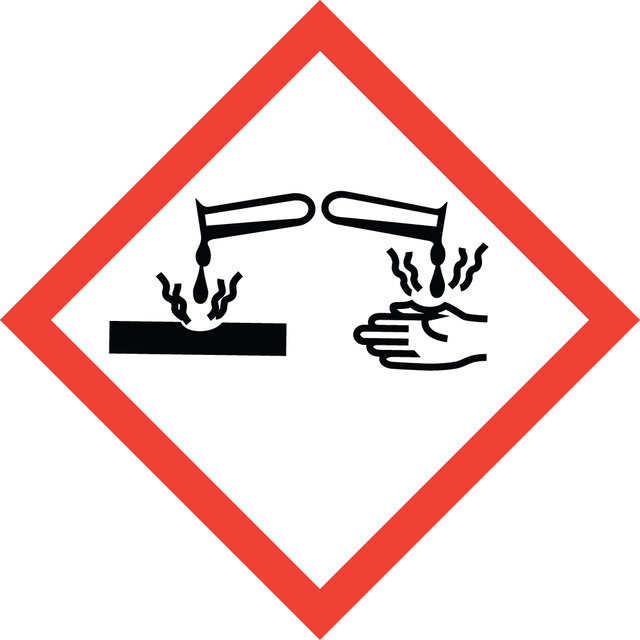939366
Nickel Citrate hydrate

99.9% trace metals basis
Synonym(s):
Nickel(II) citrate hydrate, Trinickel dicitrate
About This Item
99.9% trace metals basis
Recommended Products
type
(High purity Salts)
Quality Level
assay
>98% (by complexometric EDTA)
99.9% trace metals basis
form
powder or crystals
color
faint green to very dark green
solubility
water: soluble
anion traces
sulfate (SO42-): ≤50 ppm
cation traces
Al: <100 ppm
Cu: <100 ppm
Fe: <100 ppm
K: <100 ppm
Mg: <100 ppm
Na: ≤50 ppm
Pb: <100 ppm
Zn: <100 ppm
SMILES string
[Ni+2].[Ni+2].[Ni+2].[O-]C(=O)C(O)(CC(=O)[O-])CC(=O)[O-].[O-]C(=O)C(O)(CC(=O)[O-])CC(=O)[O-].O
InChI key
AXGFXGXJPPCFJX-UHFFFAOYSA-H
General description
Application
- To synthesize these catalysts, the nickel precursor solution was impregnated onto the surface of the AlMCM-41 support. The impregnated support was then subjected to suitable drying and calcination processes to remove any solvent or excess precursor and activate the catalyst. The catalyst prepared with nickel citrate demonstrated stronger metal-support interaction, higher metal dispersion, and superior catalytic activity compared to those prepared with nickel nitrate and alkaline tetraamine nickel nitrate. The enhanced metal-acid interaction and (de)hydrogenating capability of this catalyst resulted in the highest catalytic activity and isomerization selectivity in n-dodecane hydroconversion.
- In the synthesis of LaNiO3 perovskite, the Pechini method is employed due to its superior capabilities in achieving precise stoichiometric control, excellent reproducibility, and homogeneous product formation. This technique outperforms physical methods in ensuring the desired composition and quality of the LaNiO3 perovskite material.
Features and Benefits
- Water soluble
- Medium purity (99.9%)
- Low trace metals in ppm level
- Cost effective
- Low Chloride and sulfate levels
signalword
Danger
Hazard Classifications
Acute Tox. 4 Oral - Aquatic Acute 1 - Aquatic Chronic 1 - Carc. 1A Inhalation - Met. Corr. 1 - Muta. 2 - Repr. 1B - Resp. Sens. 1 - Skin Sens. 1 - STOT RE 1 Inhalation
target_organs
Respiratory Tract
Storage Class
6.1D - Non-combustible acute toxic Cat.3 / toxic hazardous materials or hazardous materials causing chronic effects
wgk_germany
WGK 3
flash_point_f
Not applicable
flash_point_c
Not applicable
Choose from one of the most recent versions:
Certificates of Analysis (COA)
It looks like we've run into a problem, but you can still download Certificates of Analysis from our Documents section.
If you need assistance, please contact Customer Support
Already Own This Product?
Find documentation for the products that you have recently purchased in the Document Library.
Our team of scientists has experience in all areas of research including Life Science, Material Science, Chemical Synthesis, Chromatography, Analytical and many others.
Contact Technical Service












